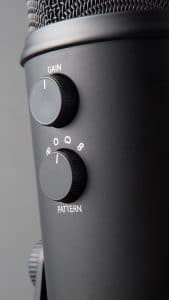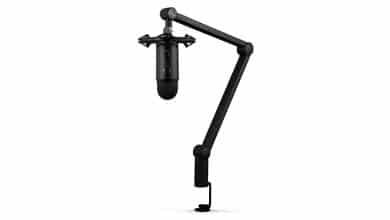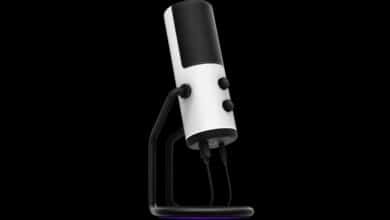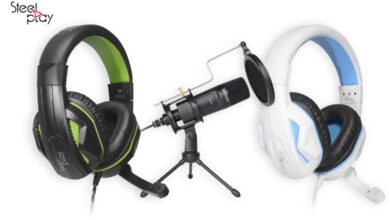
Meanwhile microphones are becoming more and more popular and important. Be it for streaming or for private use. Users are attaching ever greater importance to quality. We’ve tested the Blue Yeti Blackout for you to see what quality the 149 € large diaphragm USB microphone delivers.
Scope of Delivery
The Blue Yeti Blackout is delivered safely and well packaged. The box contains the microphone and the USB cable (2m cable length) to connect it to the PC as well as a holder for attaching the microphone. For beginners there is also a small manual in the package. Unfortunately there is no popscreen in the scope of delivery. This must be purchased separately depending on use.
Technical Details
| Weight | 1.6 kg |
| Price | 149,99 € |
| Product measurement | 12.5 x 12 x 29.5 cm |
| Model | Blackout Yeti |
| Color | Black (Matt) |
| Watt | 0.13 Watt |
| Connection | USB 3.0 |
| Workmanship | Metal |
| Hertz | 48000 |
| Bit | 64 |
| Recording type | Stereo |
| Frequency | 20Hz – 20kHz |
| Max SPL | 120dB (THD: 0.5% 1kHz) |
Workmanship

The Blue Yeti Blackout offers four different sound modes, which can be adjusted with a knob on the back of the microphone. Among them is a cardioid mode, which is designed for podcasts and livestreams. Cardioid mode records everything that happens in front of the microphone. Everything that goes on behind it is not recognized. But there is also a bidirectional mode, which is designed to conduct a two-person interview. In addition to the sound modes, the microphone also has a slider to filter background noise and a slider to adjust the volume. But there is also a mute button, which is unfortunately a bit difficult to operate, as the button does not always react when pressed lightly.
Recording Quality
The Blue Yeti Blackout offers perfect quality with its 16 bit and 48000 Hz. Hobby musicians, streamers or YouTuber get a high-quality microphone that is easy to use for beginners. The sound can really be heard, as you can hear in our sound test. The sound sounds clear and clean.
Installation
The Blue Yeti Blackout can be installed without great effort. Connect the mini-USB cable to the microphone and plug the normal USB end into the PC. The microphone is now recognized by Windows and takes a few minutes to install. After the installation you can already select and use the microphone in the sound settings. So simple Plug’n’Play, what everybody should understand fast.
Conclusion
The Blue Yeti Blackout could convince me and my friends in the test very much. It offers for 149,99 € really perfect sound. Thanks to the small setting options, you can filter out most of the background noise without the help of a mixing console or software. The voice comes across clearly and clearly. The USB microphone is very stable and robustly built. Damage should not occur. For hobby streamers, YouTuber, musicians or podcasters the Blue Yeti Blackout is worth a look. I wouldn’t recommend the Blue Yeti Blackout for professional use, because the 16 bits are not enough for vocals or recordings with instruments. Here would be worth a look at the Blue Yeti Pro, as it is designed for professional use.
Blue Yeti Blackout
Workmanship
Recording Quality
Installation
Scope of Delivery
Beautiful recording quality for beginners
The Blue Yeti Blackout offers nice recording quality for little money and all sorts of possibilities for streams or also for private use. The perfect microphone for beginners.









